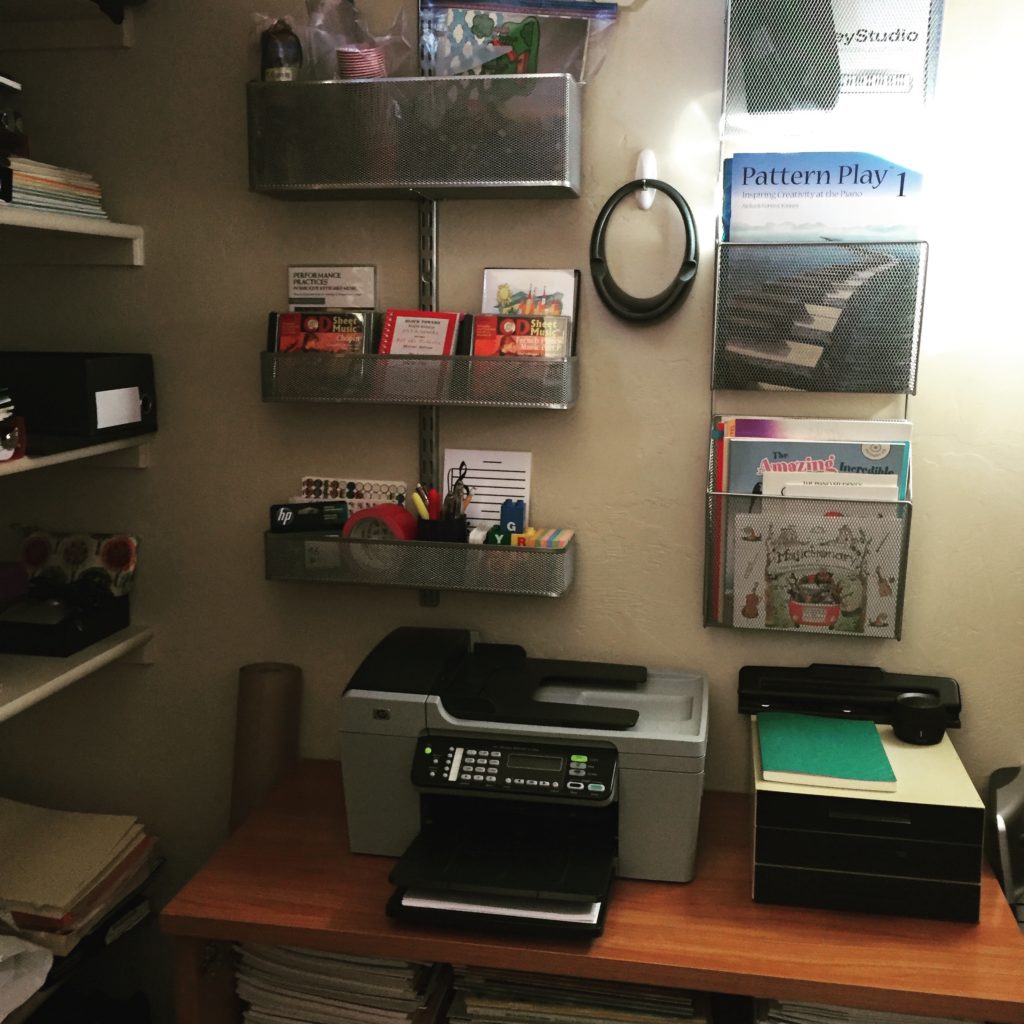Materials for a New Year: 7 Things to Keep in Mind

It’s back to piano again. For me the start of a new semester can be both exciting and overwhelming. There are new students to get to know and ongoing students to guide further. And we won’t even talk about that one person who throws the proverbial monkey wrench into your schedule the day before lessons begin.
My older daughter was commenting today on how much time we used to spend at AlphaGraphics duplicating studio policies, calendars, assignment sheets, etc. Now, all I need to do is make some edits to my documents and save them for later downloading, printing, texting, or emailing.
My favorite part of planning for a new semester is selecting individual repertoire and activities. Of course, I need to continue to do this throughout the year as students’ needs grow and change. But, everything seems new and fresh and fraught with possibilities right now. I think the students feel that way too.
We all have so many more opportunities to discover new teaching tools—workshops & conferences (destination & online), social media groups, self-publishers, online retailers, blogs, and local stores. It can be frustrating and overwhelming. In this day of instant downloads, it can also be expensive if you don’t keep yourself in check. Here are some of the things I think are important to keep in mind as I gather together music and materials.
- Write down your goals for both individual lessons and groups activities. Make sure to include both large goals and smaller ones. What do you want them to be able to do? How will you take them there? This takes a bit of time but will be worth it in the end.
- Choose potential pieces and activities from what you have in your own library first, keeping the goals you have set in mind. If it ain’t broke don’t fix it.
- Get a yourself a new trial subscription to an online service. Here are 2 of my personal favorites. Tonara gets my vote for the most flexible, creative, totally affordable, not-unitasker available. There are tons of features that allow me to create and save lessons, stay in touch with students and families, add audio and video examples, and more. Plus, I can do it all on my schedule. There are many resources and helpful mentors ready and waiting to help you succeed. Sightreading Factory has been one of my fav, most used subscriptions for many years. My students of all levels have become happier, more confident readers. I love that the exercises are truly random so they read with their ears rather than by ear. Don Crafton is helpful and answers your questions personally and thoroughly.
- Many self-publishers have created free & paid activities, tools, resources, and music to help students in their own studios and classrooms. Most times they are clever and very useful. The author took the time to redesign and edit them for download so you don’t need to reinvent the wheel. Yes, there are some duds out there but don’t throw the baby out with the bathwater. My Fistful of Notes teaching tools are available on Teachers Pay Teachers. You can click on the My Teaching Tools tab at the top of this page for information and links.
- If you have questions about something in an online store, such as Teachers Pay Teachers, don’t hesitate to contact the composer/author. We love to hear from you and it helps us make our offerings better. (If you can’t contact anyone but a site developer I would personally pass)
- Take reviews with a grain of salt. Some are paid. Some are written by those without scruples. People tend to vent when they are not happy with something and those pleased with an item mainly don’t bother to review at all unfortunately. We get a lot of personal notes which make us feel good but don’t help future buyers much.
- Be ethical. Yes, it is possible to skirt the system by taking screenshots or buying an individual download rather than a studio license. It is the same as using photocopies of print materials. No, you probably won’t get found out. But it’s wrong, a bad thing to model for your students, and you will know.


